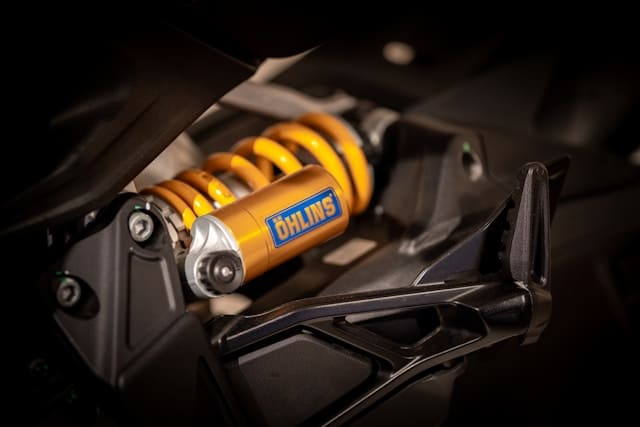Understanding the Role of Shock Absorbers in Collision Repair
 Shock absorbers are a crucial component of a vehicle’s suspension system, playing a significant role in maintaining ride comfort and handling stability. After a collision, the integrity and functionality of shock absorbers can be compromised, even if the damage is not immediately apparent. Understanding the role of shock absorbers in collision repair is vital for ensuring that a vehicle remains safe and performs optimally post-repair. This article delves into why shock absorbers are important, how they can be affected by collisions, and what to consider during the repair process.
Shock absorbers are a crucial component of a vehicle’s suspension system, playing a significant role in maintaining ride comfort and handling stability. After a collision, the integrity and functionality of shock absorbers can be compromised, even if the damage is not immediately apparent. Understanding the role of shock absorbers in collision repair is vital for ensuring that a vehicle remains safe and performs optimally post-repair. This article delves into why shock absorbers are important, how they can be affected by collisions, and what to consider during the repair process.
Importance of Shock Absorbers
Enhancing Ride Comfort
Shock absorbers help to dampen the impact and vibrations when a vehicle travels over uneven surfaces. They absorb and dissipate energy from road bumps and potholes, providing a smoother ride for passengers. Without effective shock absorbers, a vehicle would continually bounce on the springs, leading to discomfort and potentially uncontrollable handling.
Maintaining Vehicle Stability
More importantly, shock absorbers contribute to vehicle safety by maintaining tire contact with the road. This contact is essential for safe handling and braking. Efficient shock absorbers prevent excessive body movement, roll, and sway during maneuvers, helping the driver maintain control of the vehicle at all times.
Impact of Collisions on Shock Absorbers
Hidden Damage
In the event of a collision, shock absorbers can sustain hidden damage that might not be obvious without a detailed inspection. The force of a crash can cause bending or breaking of the shock absorber shaft, damage to the seals, or compromise the internal valving system. Such damage can drastically reduce their effectiveness.
Symptoms of Damaged Shock Absorbers
Post-collision, symptoms of damaged shock absorbers may include unusual noises during driving, such as knocking or rattling, a noticeable change in vehicle handling or an increase in vehicle body movements. If the vehicle feels unusually bouncy or continues to rock after coming to a stop, this could also indicate shock absorber issues.
Inspecting Shock Absorbers During Collision Repair
Professional Assessment
It is crucial to have shock absorbers professionally assessed after a collision. This inspection should be thorough, as some internal damage may not be visible externally. A qualified technician will be able to perform tests to measure the performance of shock absorbers and determine if replacements are necessary.
Considering Replacement
If damage is found, replacing shock absorbers is often recommended rather than attempting repairs. This ensures that the vehicle’s handling and stability are fully restored, especially important in severe collisions where the suspension system has been impacted.
Post-Repair Considerations
Testing and Adjustment
After new shock absorbers are installed, the vehicle should be tested to ensure that the suspension and steering systems are functioning correctly. Alignment checks are also crucial, as new shocks can alter the vehicle’s height and stance, affecting the alignment angles.
Ongoing Maintenance
Once repaired, ongoing maintenance of shock absorbers and the suspension system is important to preserve their condition and functionality. Regular checks as part of routine vehicle maintenance can help catch any future issues before they become serious.
Conclusion
Shock absorbers are fundamental to both the comfort and safety of a vehicle, especially following a collision. Ensuring they are in good working order after repairs is critical for the safety and performance of the vehicle. Vehicle owners should prioritize thorough inspections and not overlook this key component during collision repairs, as doing so can compromise the overall safety and drivability of the vehicle.
